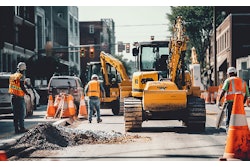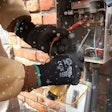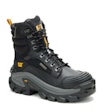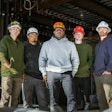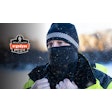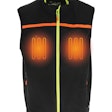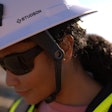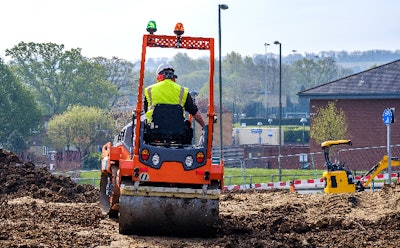
High-visibility vests, also known as hi-vis or reflective vests, are designed to offer a measure of protection during daytime, nighttime and other low-light conditions for workers in various environments.
The Occupational Safety and Health Administration (OSHA) and the Federal Highway Administration have specific guidelines and standards regarding wearing high visibility clothing – including vests – that encompass those issued by the International Safety Equipment Association (ISEA) and the American National Standards Institute (ANSI) in ANSI/ISEA 107-2020.
OSHA notes from 2011 to 2015, 57 percent of the struck-by vehicle deaths happened at the workplace because of not wearing safety vests. OSHA requires employers assess their workplace hazards to determine if workers need to wear Personal Protective Equipment (PPE) such as high-visibility safety vests and, if so, to provide the appropriate vest for the job, at no cost to the employee.
Employers are required to train workers on the proper use, care and maintenance of their PPE, including safety vests.
ANSI Hi-vis Ratings
The ANSI/ISEA 107-2020 standard classifies high-visibility vests on different standards and ratings. There are three types of safety vests – R, O and P – with each type split into three different classes.
ANSI-rated high-visibility vests include Type R, used in roadway work, providing daytime and nighttime visual enhancements and encompassing Class 2 and Class 3. Type 0 is used for off-road use in low-risk situations or where traffic is under 25 mph and encompasses only Class 1 safety vests, providing moderate visibility.
Type P safety vests encompass Class 2 and Class 3 and used by law enforcement and first responders.
A Class 1 safety vest is used for work in the lowest risk areas, such as away from an active roadway and where the background is not complex, but where there is still potential for injury. Class 1 vests are worn on worksites where traffic is travelling no more than 25 mph. They can be colored safety yellow or safety orange and utilize at least 155 sq. in. of reflective stripes.
ANSI Class 2 is used to stand out against a background of many colors and depth, such as found in road construction. Class 2 provides additional high visibility materials and enables detection and identification of workers from longer distances. The vests also are worn for work in inclement weather.
A Class 2 safety vest is worn during the day or night on worksites where traffic flows from 25 to 50 mph. Typical Type R Class 2 safety vests have 775 sq. in. of background material and at least 540 sq. in. for smaller vests; 201 sq. in. of retroreflective or combined-performance materials and at least 1.38 inches width of retroreflective material and one inch width for split trim design.
A Type R ANSI Class 3 vest is used when jobs necessitate high visibility, mobility and flexibility, such as working in high-speed traffic more than 50 mph and high-risk environments where visibility of workers may be reduced.
The vests are worn in hazardous environments as they feature the most background material and reflective striping: a minimum of 1,240 sq. in. of safety yellow or safety orange background at least 310 sq. in. of reflective striping.
Colors and Materials
All ANSI classes of safety vests must have at least two types of material: background and retroreflective/combined performance material. ANSI-approved background colors for safety vests are yellow-green, orange-red and red, the latter used by first responders.
The striping seen on safety vests is retroreflective material, which reflects light directly back to the light source. It’s highly visible at night with direction lights, such as vehicle headlights. The striping is typically silver, white, or gray and is placed on the vest in an ‘H’ or ‘X’ pattern. Contrasting tape includes high-visibility striping below the reflective layer. Lime is used on orange garments; orange is used on lime garments.
Vests also may have combined performance material, which has retroreflective properties and meets background material fluorescent requirements. Some vests may have combined-performance striping matching the background material for optimal daytime visibility as well as providing nighttime visibility.
A true ANSI-rated high-visibility vest bears a label noting the vest type, class, fire-resistant rating, applicable ARC rating and size and the ANSI standards it meets.
Check out IRONPROS workwear to view the latest brand, products and gear for your construction work!
